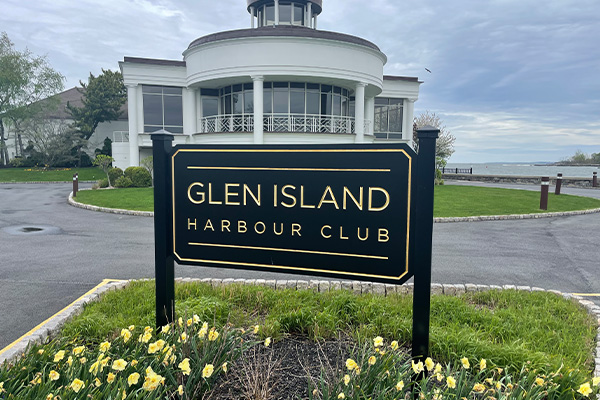
“Age cannot wither her, nor custom stale her infinite variety”: William Shakespeare is talking about Cleopatra in his play “Antony and Cleopatra,” but “infinite variety” is A good phrase to describe the Sound Shore.
“It”™s an incredibly diverse community, which is what makes it so vibrant,” says Laura deBuys, president and executive director of The Picture House Regional Film Center, “and it”™s a very caring community, with a number of nonprofits and businesses working close together.”
For an example of this, she adds, we need look no further than the film center, which includes The Picture House Pelham, named to the National Register of Historic Places in 2010 (Page 54). Con Ed supports free movies for seniors at 2:30 p.m. Tuesdays at the 101-year-old Picture House Pelham ”” among the cultural high points in a village whose main thoroughfare, the appropriately named Fifth Avenue, includes the lovely St. Catharine”™s Roman Catholic Church and the bustling Pelham Art Center.
Technically, the town of Pelham ”” which includes the more commercial village of Pelham and the more residential village of Pelham Manor ”” isn”™t part of the Sound Shore region as it isn”™t on the Long Island Sound. (It”™s on Pelham Bay, but according to the Town of Pelham Public Library, “a teeny tiny portion” lies on the Sound, which is good enough for us.) Nevertheless, we wanted to begin our journey there as if we were riding up the Boston Post Road (U.S. 1) in Westchester County, because the Pelhams ”” named not for Thomas Pell, who bought much of the area from the indigenous Siwanoy people in 1654 but after his “Pelham” manor, honoring his tutor, Pelham Burton ”” embody the contrast to which deBuys alludes.
The village of Pelham is home to an array of businesses. These include Barksdale Home Care Services Corp.; Pico Electronics, “the ultra-miniature inductor and transformer

resource for anything that requires power conversion,” such as military and flight applications, its website says; and Archie Comics, whose World War II-era teens have been updated and spun off into TV series and movies.
With its gracious, tree-lined Esplanade, affluent Pelham Manor is known for the New York Athletic Club ”” Travers Island (Page 66) and such historic homes as the 1838 Bolton Priory, overlooking Pelham Bay; the 1893 school building Edgewood House, built in the Colonial Revival style; and Pelhamdale (1750-1823), the commanding stone residence of Thomas Pell”™s grandson Philip Pell II.
Our next stop is the place poet and resident James J. Montague dubbed “the Queen City of the Sound” ”” New Rochelle. “New Rock City” has it all ”” from island and waterfront parks and sports to educational institutions that include the Ursuline and Salesian schools and Iona and Monroe colleges to Montefiore New Rochelle Hospital to a variety of real estate, home design, construction, software and chemical companies.
“New Rochelle is a great city with a small-town feel,” says Tony Alfano, vice president and executive director of Montefiore New Rochelle Hospital (Page 78). “It is wonderfully diverse, with many cultures informing and enriching our perspectives and values. We couldn”™t be prouder to work in this community and have so many of our employees live here.”
Perhaps what really sets New Rochelle apart, though, is its piquant history. While much of Westchester was settled by the Dutch and English, New Rochelle derives its name and flavor from the Huguenots (French Protestants), who in escaping persecution in their home country settled on 6,100 acres deeded by Thomas Pell and named their colony after La Rochelle, France. While George Washington passed through the community in 1775 on his way to command the Army of the United Colonies in Massachusetts, New Rochelle”™s Revolutionary claim to fame was as the postwar home of Thomas Paine, whose pamphlet “Common Sense” (1776) helped galvanize the colonists.

In the 20th century, New Rochelle got in on the ground floor of the burgeoning movie business, serving as the home of Thanhouser Film Corp. and Terrytoons animation studio. That cinematic legacy survives in the entertainment complex New Roc City and in the city”™s role as a location for such films as “Goodfellas” and “Catch Me if You Can.” It”™s no wonder, then, that New Rochelle has been home to so many luminaries, including New York Yankee legend Lou Gehrig, sculptor Frederic Remington, artist-illustrator Norman Rockwell, actor Ossie Davis, his actress wife Ruby Dee and their musician son Guy Davis and the writer E.L. Doctorow, whose New Rochelle-set novel “Ragtime,” mixing fiction and turn-of-the-20th-century figures in a story of exploding racial tensions, was made into a movie and a Broadway musical.
We next come to one of the ultimate resort communities-turned-suburbs ”” the village of Larchmont. Picture more than a half-dozen parks, the Larchmont Shore and Larchmont Yacht clubs, restaurants and boutiques lining Chatsworth and Palmer avenues and a public library that looks like a mini White House. Ranked pre-Covid by Bloomberg as the third wealthiest place in New York state and the 15th richest in the United States, Larchmont”™s moneyed air has been the subject of fiction and nonfiction alike. In “Wall Street,” Michael Douglas”™ Gordon Gekko greets a fellow 1 percenter with “How”™s Larchmont treating you?” In his book “Too Big to Fail,” resident Timothy Geitner, who famously became President Barack Obama”™s secretary of the Treasury amid the Great Recession, considers an offer to become CEO of Citigroup Inc. while walking the village. And caustic comedian and fashion critic Joan Rivers, a self-proclaimed Larchmont resident, once told us that the way she separated the villagers from the wannabes was to ask what exit they”™d use on the Hutchinson River Parkway. If they said anything but Exit 20, Weaver Street, she knew they weren”™t from Larchmont.
The village is part of the town of Mamaroneck, which includes the village of Mamaroneck. It”™s where Mamaroneck Avenue which begins in White Plains, ends. (Or perhaps, if you are a Mamaroneck resident, it”™s where the business-lined thoroughfare begins.) As with its Sound Shore sisters, Mamaroneck follows a similar historical pattern: Land acquired by English settlers from the Siwanoy people, brushes with Revolutionary activity and an ascendance as a 19th-century resort. Like New Rochelle, Mamaroneck got in the movie business early, with the arrival of controversial director D.W. Griffith, whose “Birth of a Nation” has been denounced for its racism. In the 1920s, Griffith”™s 28-acre estate on Orienta Point ”” the former home of Standard Oil co-founder Henry M. Flagler, built on a piece of land known as “Satan”™s Toe” ”” was also a magnet for stars like Mary Pickford, husband Douglas Fairbanks Sr. and Charlie Chaplin, Griffith”™s partners in United Artists; and a better-known Standard Oil co-founder, John D. Rockefeller Sr. Mamaroneck”™s movie pedigree would survive in the work of film restorer Robert A. Harris, whose restoration of the 1962 Oscar winner “Lawrence of Arabia” brought its director, David Lean, to the municipality.
But Mamaroneck has always embraced a swath of businesses, many of which WAG has profiled ”” from Calico interior design services to Chocolations; Derecktor Shipyards; the Emelin Theatre; Glo Beauty Bar; the Morano Group LLC, a landscaping and hardscaping company; and Winged Foot Golf Club, which last hosted the U.S. Open in 2020. And don”™t forget Walter”™s Hot Dogs ”” well worth the wait on the long lines outside its landmarked pagoda.
We”™ve now arrived at the city of Rye ”” which is not to be confused with Rye Neck, a section of the village of Mamaroneck that lies in Rye Town, which contains the villages of Rye Brook and Port Chester. Indeed, the city of Rye was once the village of Rye in the town of Rye ”” until it got its own charter in 1942. To complicate matters further, Rye was part of Fairfield, Connecticut, in the 1600s. At 80 years old the “youngest” city in New York state, Rye teems with history. It has two National Historic Landmark sites. The Boston Post Road Historic District includes the Jay Estate, once the home of founding father and first U.S. Supreme Court Chief Justice John Jay and now run by the Jay Heritage Center; the Marshlands Conservancy, formerly part of the Jay Estate; and the events venue Whitby Castle at Rye Golf Club. The other National Historic Landmark site is Playland, the Art Deco jewel of an amusement park that figures in such movies as “Big” and Fatal Attraction.” Now undergoing a $135-million renovation, Playland reopens June 9 even as its refresh continues into next year.
Rye also has eight sites on the National Register of Historic Places, including the Rye Town Park Bathing Complex and Oakland Beach, adjacent to Playland; the Rye African-American Cemetery; and the Square House, where George Washington slept, not once but twice, and praised the Widow Haviland, who owned the 18th-century tavern/inn, for her fine porridge. The Square House sits squarely on tony Purchase Street, where we like to browse at home goods boutiques like Pink and African-themed Sarza as well as R & M Woodrow Jewelers before having a bite at Rafele Rye or taking a side trip to Longford”™s Ice Cream.
Making a left on Purchase, we head on the Post Road to our last, but never least, stop ”” Port Chester. This “Gateway to New England” ”” home of the distinctive former Life Savers candy headquarters that is now a landmarked condominium complex ”” tantalizes with a mix of big-box stores at the Gateway Shopping Center and The Waterfront shopping mall; artisanal business that hug Main Street and a United Nations of restaurants reflecting the dynamism that immigrants have added to the community. Among the places WAG has written about are Saltaire Oyster Bar and Fish House; Robison, a self-styled “full-service home comfort company”; Patty”™s Portico Outdoor Furniture Restoration & Sales, a favorite of Martha Stewart”™s, adjacent to L & M Roofing; The Kneaded Bread, where the line snakes out the door for soups, salads and lattes and where it is well worth the wait for the rich cinnamon bread; and The Capitol Theatre, the movie palace turned rock”™n”™roll temple that The Grateful Dead”™s Jerry Garcia said was one of the only two theaters “set up pretty groovy all around for music.”
But then the Sound Shore is a pretty groovy place.






















